[/caption]
The Cassini spacecraft recently had a mini ‘grand tour’ of several of Saturn’s moons and just sent back some great images of Helene, Mimas, Enceladus and Dione. Above is an amazing view of the Trojan moon Helene, which is only 32 kilometers (20 miles across) and shares an orbit with Dione. Cassini came withing 28,000 km (17,398 miles) of Helene. Thanks to Stu Atkinson for an enhanced version of this raw Cassini image. See one of the original raw images of Helene here.
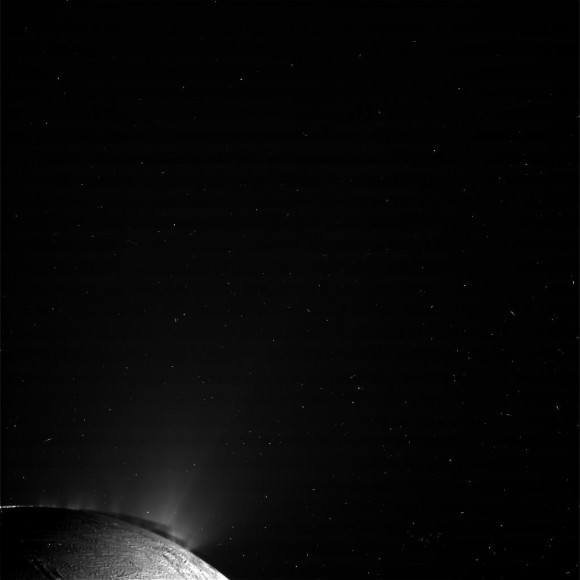
Cassini captured several images of the plumes spewing from Enceladus, and other closeup views of the moon’s terrain.
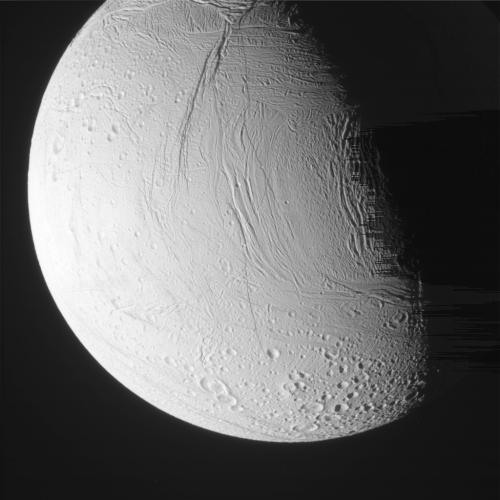
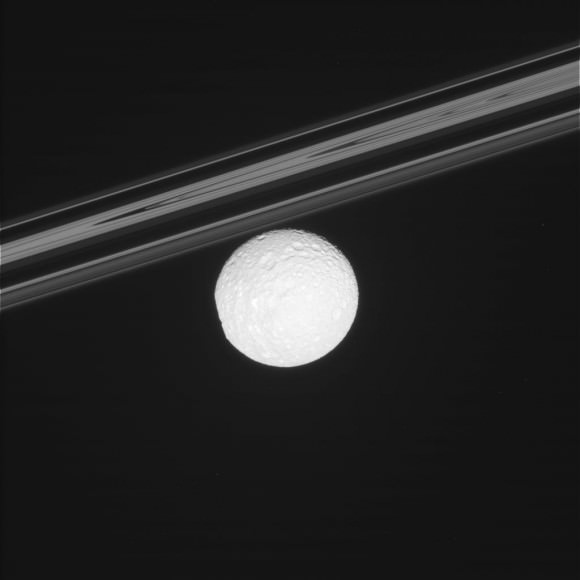
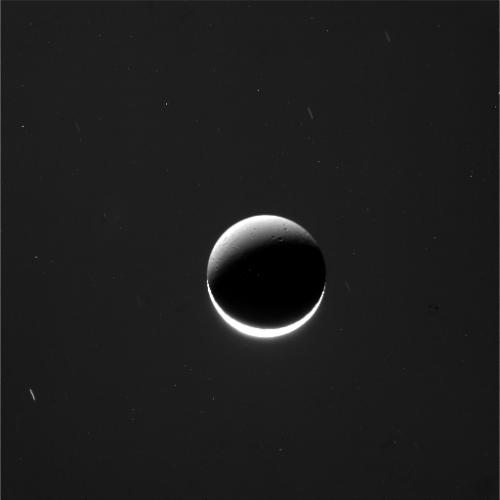
See more of the latest raw images at the Cassini website.

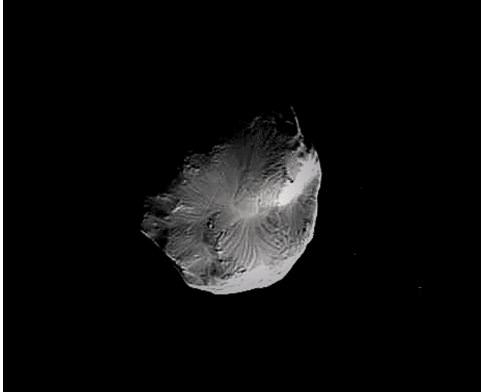
I sincerely wish you would provide a link to the full res versions of the images of Universe Today. I am constantly trying to find them, mostly to no avail. In this particular case, going to the Cassini website link above shows me lots of images, but none of the ones in this article.
Click on the images and they should bring you to the original image on the Cassini website, except for the first one, which is a modified image. I just added the link to one of the originals, though.
The “raw” image link also provides these images (its not that hard to look through them and find ’em) and many more — well worth a look!
What an odd looking moon tiny Helene turns out to be. It appears to have linear features on its surface somewhat reminiscent of the grooved terrain found on Phobos (the two moons are roughly the same size). I found an earlier image of Helene that shows some of these features near the moon’s terminator: http://photojournal.jpl.nasa.gov/catalog/PIA12723
The Cassini site has more pictures of this seldom-imaged moon here: saturn.jpl.nasa.gov/photos/?start=1&subCategory=27
The first image just brings me to another page in Universe Today with only the image, -no link to source and no larger view. This is most often the case on images I click on at Universe Today. That’s what I’m hoping you’ll change.
The second image of Enceladus with the jets, when clicked on, brings up a cropped image missing most of the moon, -missing what is shown in this article. Why would this be?
The last image of Dione brings up a very different image with the occulting moon completely in silhouette and the surrounding field in gray, not black. How did that come about?
I have visited the Cassini site and couldn’t find the first image in this article.
WOW! That fist image ‘knocks my socks off’. HOW could those patterns possibly have been formed? Dust filled gulley wash in crater bowls? Simply amazing…